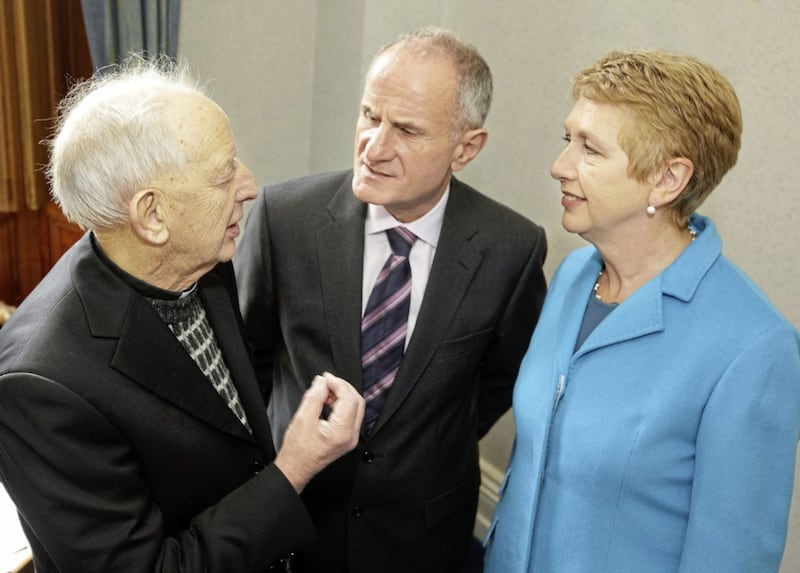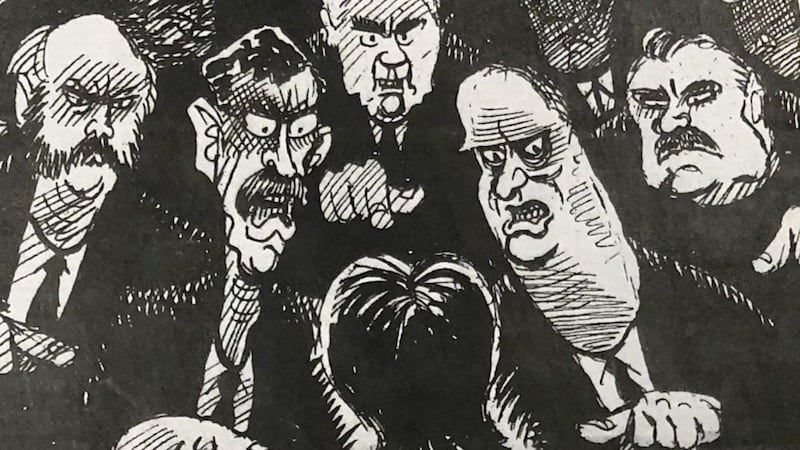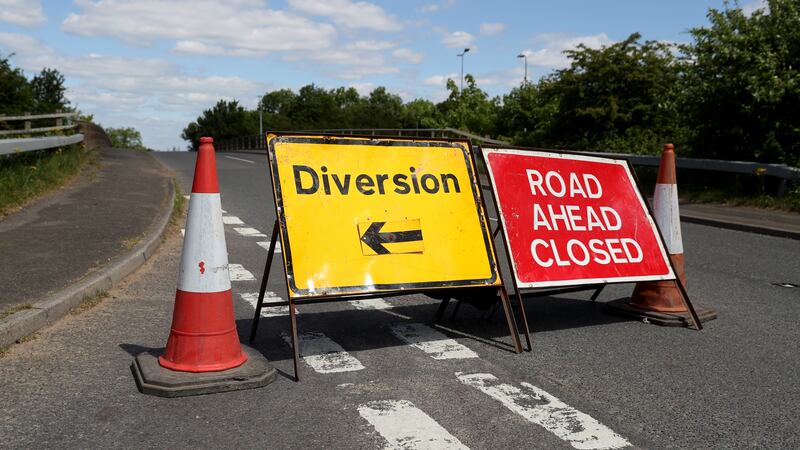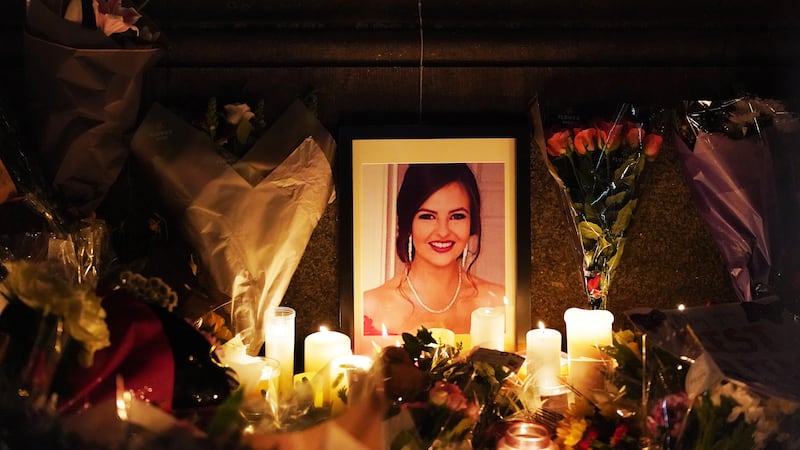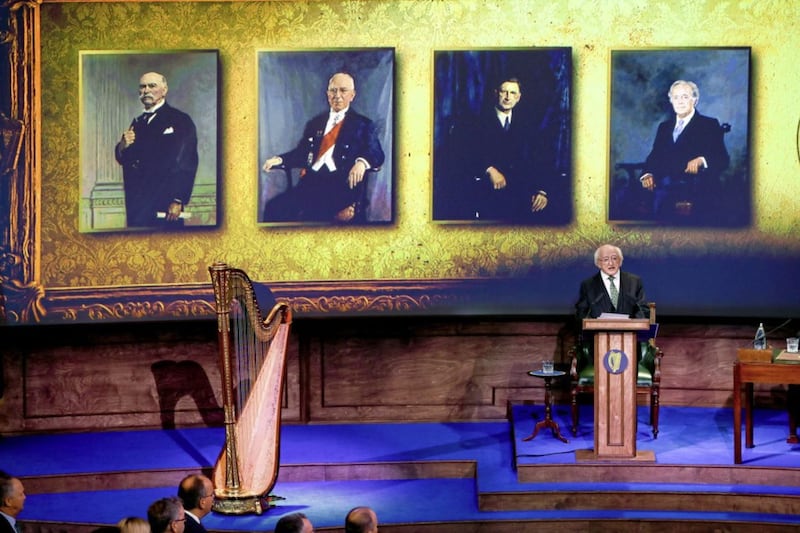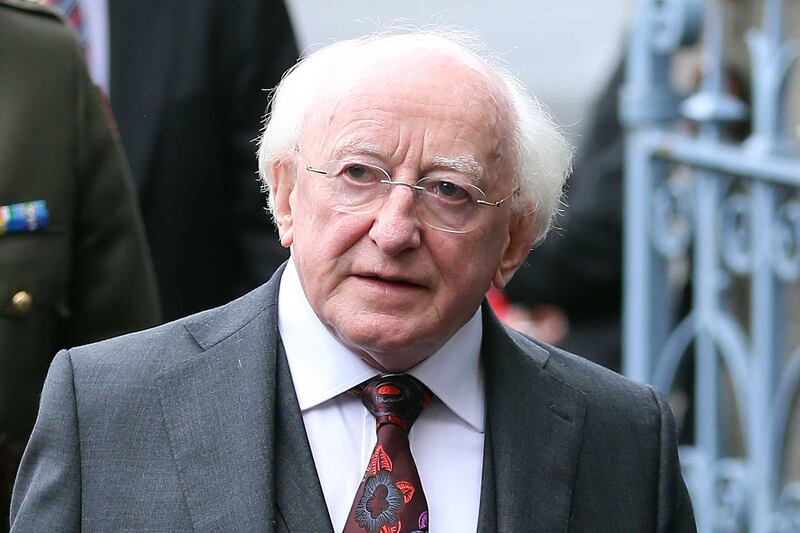MARY McAleese's presidency is widely regarded as a success story. During her two terms in office between 1997-2011, the Belfast-born former journalist and law lecturer remained true to her stated philosophy of “building bridges”. She encouraged engagement between nationalists and unionists, strengthened cross-border ties and sought to mend the historically strained relationship between Ireland and Britain.
But in the weeks before she became the first northerner to occupy Aras an Uachtaráin, there was a degree of disquiet on both sides of the border about her candidacy, emanating from both predictable quarters and some less obvious.
The presidential campaign coincided with a pivotal period in the peace process. The IRA’s second ceasefire had been called weeks earlier and the election of Tony Blair’s Labour government meant the stalled peace process was again gathering momentum.
John Hume and Gerry Adams were meeting regularly at Clonard Monastery in west Belfast, where for a number of years Dr McAleese had been involved in the Redemptorist order’s reconciliation and peace building efforts. Working alongside her, though away from the public glare, was Jim Fitzpatrick, chairman of The Irish News.
Having defeated former Taoiseach Albert Reynolds in an internal party election to determine Fianna Fáil’s presidential nomination, the then 46-year-old Mrs McAleese was clear favourite to top the poll.
But in the Dublin-based press a campaign was afoot to damage her by labelling the northern candidate as an IRA sympathiser. Leading the charge was Sunday Independent columnist Eoghan Harris, who was acting as an adviser to presidential election rival Derek Nally. In one piece he described Dr McAleese as a ‘tribal timebomb’, while a fortnight before the October 30 poll the Sunday Business Post carried a story based on a leaked memo from the Department of Foreign Affairs (DFA).
The memo was based on two conversations with Dr McAleese from earlier in the year, during the latter of which she discussed Sinn Féin's electoral advance. The leak angered the Bertie Ahern-led government in Dublin, who believed it was designed to spoil the candidate’s chances, while a shocked Dr McAleese was forced to refute its insinuations, publicly professing support for the SDLP.
It was a second leaked DFA memo, however, forming the basis of a front page article in the Sunday Tribune a week later that proved the more explosive and almost led the future president to withdraw from the race. Based on a DFA official’s off the record conversations with future SDLP deputy leader Brid Rodgers, then a councillor in Craigavon, the memo, which was never intended to be made public, reflected the unease within what was then nationalism’s largest party about the rise of Sinn Féin and the ongoing Hume-Adams dialogue.
In one particular extract, Mrs Rodgers highlighted what she regarded as “the poor coverage available to the SDLP in The Irish News of late”.
The memo suggested that the chairman of The Irish News, Jim Fitzpatrick, had recently formed an "unofficial alliance with Father Alex Reid [a Redemptorist priest in Clonard monastery] and Mary McAleese of QUB”.
“Referring to this group as the ‘triumvirate’, Ms Rodgers described their main object as promoting a new nationalist consensus which owes more to Sinn Féin than the SDLP. All three are in regular touch with the Sinn Féin leadership and are in reality pushing the Sinn Féin agenda,” the leaked memo said
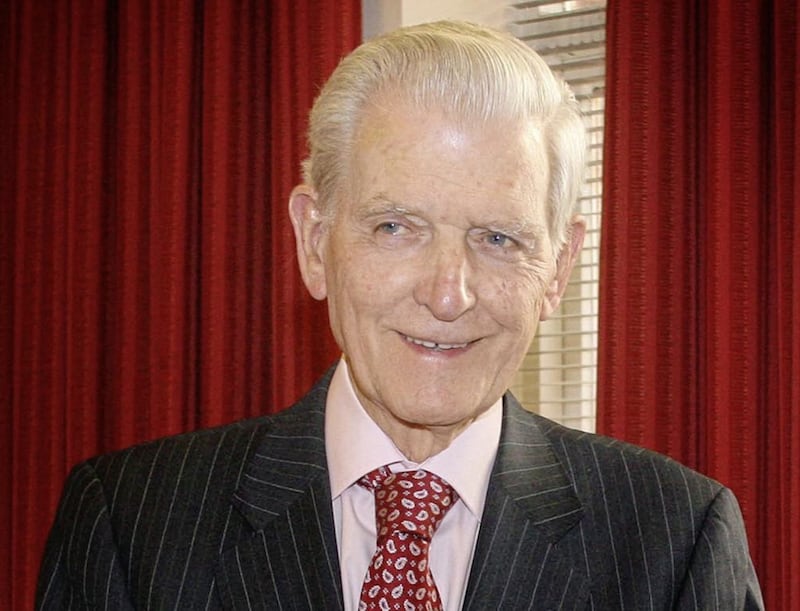
As an example of how the paper had become “more pro-Sinn Féin”, Ms Rodgers referred to an opinion article by her colleague Joe Byrne, from which she claimed references to Sinn Féin’s abstentionist policy had been removed prior to publication.
The Irish News quickly established that the cited article by Joe Byrne had never been submitted to the paper for publication.
A lengthy statement from The Irish News carried in the paper the following day refuted each of the claims individually.
The episode also prompted Jim Fitzpatrick to make a statement clarifying the role of the Redemptorist Peace Mission, which he said was to “facilitate dialogue between the two communities in Northern Ireland”.
“This was a genuine and sincere initiative and it is both hurtful and malicious to suggest any subversive motivation by any of the individuals involved,” he said.
“Professor McAleese is an honourable and trusting individual who is totally committed to peace and these smear attempts are uncivilised in the modern democratic Ireland.”
The following day, then SDLP leader John Hume, after discussions with Mr Fitzpatrick, moved to distance himself from the leaked comments, while his deputy Seamus Mallon dismissed the idea that Dr McAleese had ever been a Sinn Féin supporter.
In a subsequent interview with the Irish Times, Mrs Rodgers said she wished “to refute the unworthy implications from some quarters in relation to Professor McAleese, Mr Fitzpatrick and Father Alex Reid”.
As Dr McAleese herself explains in Here’s the Story, the concerted smear campaign had left her presidential aspirations hanging by a thread, and it was only interventions by Mr Fitzpatrick and head of the Redemptorists Fr Brendan Callanan, coupled with support from a host of politicians from nationalist and unionist backgrounds, that persuaded her to persist.
For nationalism on this side of the border it was an understated but significant victory, as the failure to elect a northerner as president in 1997 would have undoubtedly altered the dynamic of the peace process. It also exposed the often dormant but nonetheless powerful anti-northern sentiments that prevailed in elements of the Dublin establishment.
Irish News editor Noel Doran described Dr McAleese's book as "an important publication which sheds new light on a key period of our recent history".
"It is clear that the Redemptorist Peace Mission was a highly significant initiative which helped to prepare the way for the 1998 Good Friday Agreement, and there can be no doubt that it was blatantly misrepresented in some quarters to damage the closing stages of her presidential campaign," he said.
"The smears from anonymous sources which were directed against Dr McAleese and our chairman, Jim Fitzpatrick, were shocking, but the truth eventually prevailed and I'm glad that our paper was among those who played a part in setting the record straight at a crucial stage."
He said the former Queen's University pro vice-chancellor subsequently went on to become "one of our most distinguished presidents".
"With her term of office culminating in the organisation of Queen Elizabeth's historic 2011 visit, it is striking to discover that she was previously prepared to withdraw her candidacy in 1997 rather than undermine the work of the Redemptorist process," he said.
